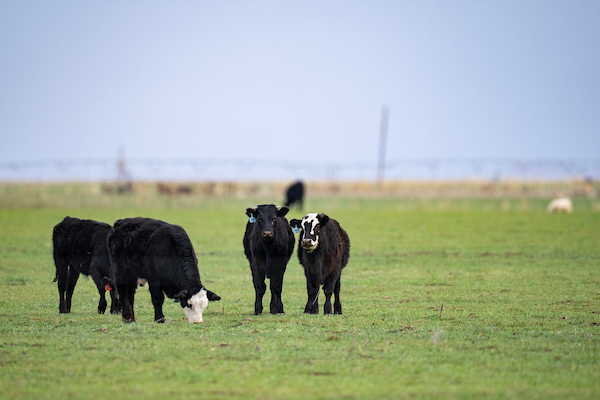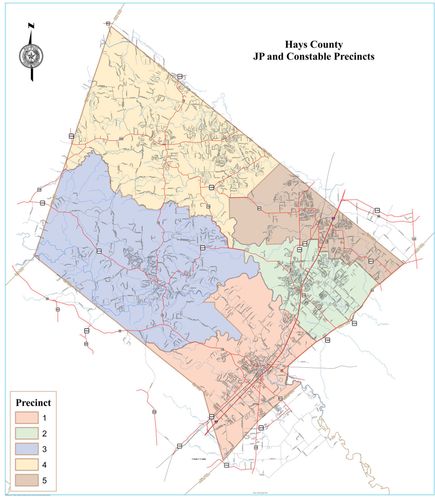2025 Summer Climate Report: Western Washington’s Environmental and SDG Implications
The summer of 2025 in western Washington was characterized by significantly warmer and drier conditions than historical averages. These climatic anomalies present considerable challenges to the region’s progress toward several key Sustainable Development Goals (SDGs), particularly those concerning water, health, and ecosystems.
Precipitation Deficits and Water Scarcity
Regional Rainfall Analysis
A persistent dry trend throughout the winter, spring, and summer months resulted in substantial precipitation deficits across the region. This has exacerbated drought conditions, directly impacting water resource availability.
- Seattle-Tacoma International Airport (SEA): Concluded September with a rainfall deficit exceeding seven inches for the year.
- Olympia: Recorded a deficit of over nine inches for the year, with summer rainfall more than two inches below average.
- Forks: Experienced an extreme deficit, finishing the summer over 23 inches below its annual average.
- Hoquiam: Ended September approximately nine inches drier than normal for the year.
According to the U.S. Drought Monitor, these conditions have led to moderate to severe drought classifications across the entire state.
Implications for Sustainable Development Goals
The severe lack of precipitation directly threatens the achievement of critical SDGs:
- SDG 6 (Clean Water and Sanitation): The pronounced drought places significant strain on freshwater reserves, jeopardizing water security for consumption, sanitation, and agriculture for communities throughout western Washington.
- SDG 15 (Life on Land): Water scarcity places immense stress on terrestrial ecosystems, increasing the risk of land degradation and biodiversity loss.
- SDG 2 (Zero Hunger): Reduced water availability for agriculture can lead to lower crop yields, impacting regional food systems and economic stability for farmers.
Elevated Temperatures and Climate Action Urgency
Temperature Anomalies
The summer was notably warmer than average, a trend consistent with long-term climate change projections. This pattern of increased heat intensity and frequency poses risks to public health and infrastructure.
- Seattle-Tacoma International Airport (SEA): The overall summer temperature was 1.2 degrees above average. The area recorded eight days at or above 90°F, a significant increase from the 20th-century average of three such days.
- Olympia: Temperatures were nearly two degrees above normal for the June-September period, with 13 days reaching over 90°F.
- Regional Highs: Forks reached 95°F on August 11, and Hoquiam recorded its warmest day at 88°F on September 16.
Connection to Global Climate Goals
These temperature trends underscore the urgency of local and global climate initiatives.
- SDG 13 (Climate Action): The consistent above-average temperatures and frequency of extreme heat days serve as clear indicators of a changing climate, demanding immediate and robust action to mitigate greenhouse gas emissions and build adaptive capacity.
- SDG 3 (Good Health and Well-being): Extreme heat events pose significant health risks, including heat-related illnesses, particularly for vulnerable populations.
- SDG 11 (Sustainable Cities and Communities): Sustained high temperatures challenge the resilience of urban infrastructure and the overall quality of life in cities and communities.
Wildfire Impacts on Health, Ecosystems, and Communities
Wildfire Activity and Air Quality Degradation
The warm and dry conditions created an environment conducive to wildfires, with over 1,600 reported across the state. The Bear Gulch fire in Mason County was a significant event, burning over 20,000 acres. Consequently, wildfire smoke became a major environmental concern, marking the seventh summer in the last nine with adversely impacted air quality.
Assessing the Damage against SDG Targets
The proliferation of wildfires and smoke has direct, negative consequences for multiple SDG targets.
- SDG 15 (Life on Land): Wildfires cause catastrophic damage to forests and habitats, leading to a direct loss of biodiversity and accelerating land degradation.
- SDG 3 (Good Health and Well-being): Poor air quality from wildfire smoke presents a severe public health threat, leading to respiratory and other health complications across the population.
- SDG 11 (Sustainable Cities and Communities): Wildfire smoke diminishes the safety and health of human settlements, while the fires themselves pose a direct threat to communities and critical infrastructure.
Seasonal Outlook and Pathways to Resilience
Forecast and Potential for Recovery
The long-range seasonal outlook for December through February indicates a potential shift to cooler and wetter-than-average conditions. This forecast offers a prospect for mitigating the prevailing drought and replenishing the mountain snowpack, a vital component of the region’s water supply.
Opportunities for SDG Advancement
The anticipated shift in weather patterns provides an opportunity to bolster regional resilience and advance SDG-related objectives.
- A healthier mountain snowpack would directly support SDG 6 (Clean Water and Sanitation) by recharging reservoirs and aquifers.
- The experience of this severe summer highlights the critical need for proactive adaptation and mitigation strategies under SDG 13 (Climate Action) to prepare for future climate-related events.
The environmental challenges of the 2025 summer underscore the interconnectedness of climate, water, health, and ecosystems, reinforcing the need for an integrated approach to achieving the Sustainable Development Goals.
Analysis of Sustainable Development Goals in the Article
1. Which SDGs are addressed or connected to the issues highlighted in the article?
- SDG 3: Good Health and Well-being: The article mentions that “Wildfire smoke has adversely impacted air quality,” which directly relates to environmental health risks.
- SDG 6: Clean Water and Sanitation: The core theme of the article is the lack of water, described through “well below-average rainfall,” significant rainfall deficits (e.g., “more than seven inches of rain below average”), and the resulting “moderate to severe drought conditions.” This highlights challenges in water availability.
- SDG 13: Climate Action: The article discusses several climate-related issues, including warmer-than-average temperatures, an increase in the frequency of extreme heat days (“The average number of 90-degree days at SEA since 2015 has been eight. The average during the 20th century was only three.”), and the resulting natural disasters like widespread wildfires.
- SDG 15: Life on Land: The impact of dry conditions on terrestrial ecosystems is evident through the mention of wildfires. The article states that the “Bear Gulch fire… has burned over 20,000 acres,” representing a significant degradation of forest land.
2. What specific targets under those SDGs can be identified based on the article’s content?
- Target 3.9: “By 2030, substantially reduce the number of deaths and illnesses from hazardous chemicals and air, water and soil pollution and contamination.” The article’s focus on wildfire smoke adversely impacting air quality directly connects to this target, as smoke is a form of air pollution that causes illness.
- Target 6.4: “By 2030, substantially increase water-use efficiency across all sectors and ensure sustainable withdrawals and supply of freshwater to address water scarcity…” The article’s detailed account of drought conditions across western Washington, with locations like Forks being “more than 23 inches of rainfall below average,” directly points to the issue of water scarcity that this target aims to address.
- Target 13.1: “Strengthen resilience and adaptive capacity to climate-related hazards and natural disasters in all countries.” The article describes climate-related hazards such as drought and wildfires (“The warm, dry conditions led to a large number of wildfires”). The recurrence of these events (“Wildfire smoke has adversely impacted air quality seven out of the last nine summers”) highlights the need for increased resilience, which is the focus of this target.
- Target 15.3: “By 2030, combat desertification, restore degraded land and soil, including land affected by desertification, drought and floods…” The article’s mention of “moderate to severe drought conditions” and the fact that a single fire has “burned over 20,000 acres” is a clear example of land degradation due to drought and fire, which this target seeks to combat and reverse.
3. Are there any indicators mentioned or implied in the article that can be used to measure progress towards the identified targets?
- For Target 3.9: While the article does not provide mortality or illness statistics, it implies a relevant measure by stating, “Wildfire smoke has adversely impacted air quality seven out of the last nine summers.” The frequency and duration of poor air quality events due to smoke serve as an indirect indicator of health risks from air pollution.
- For Target 6.4: The article provides several data points that can be used as indicators of water stress. These include specific rainfall deficits (“SEA had finished more than seven inches of rain below average”) and the official classification from the U.S. Drought Monitor (“moderate to severe drought conditions”). These metrics directly measure the level of water scarcity.
- For Target 13.1: The article provides quantitative data that can serve as indicators for the frequency and intensity of climate-related hazards. These include the number of extreme heat days (“the eighth time SEA reached 90 degrees or better”) and the number of wildfires (“more than 1600 wildfires have been reported in the state”).
- For Target 15.3: The article provides a direct indicator for land degradation. The statement that the “Bear Gulch fire… has burned over 20,000 acres” is a specific measurement of the proportion of land degraded by fire, which aligns with the goal of tracking and restoring degraded land.
4. Table of SDGs, Targets, and Indicators
| SDGs | Targets | Indicators (Mentioned or Implied in the Article) |
|---|---|---|
| SDG 3: Good Health and Well-being | 3.9: Reduce illnesses from air pollution. | Frequency of poor air quality events (“Wildfire smoke has adversely impacted air quality seven out of the last nine summers”). |
| SDG 6: Clean Water and Sanitation | 6.4: Address water scarcity and ensure sustainable supply of freshwater. | Level of water stress, measured by rainfall deficits (“more than seven inches of rain below average”) and official drought status (“moderate to severe drought conditions”). |
| SDG 13: Climate Action | 13.1: Strengthen resilience to climate-related hazards and natural disasters. | Frequency of extreme weather events (number of 90-degree days) and number of climate-related disasters (“more than 1600 wildfires”). |
| SDG 15: Life on Land | 15.3: Combat desertification and restore degraded land. | Proportion of land degraded, measured by the area burned by wildfires (“over 20,000 acres”). |
Source: mynorthwest.com







